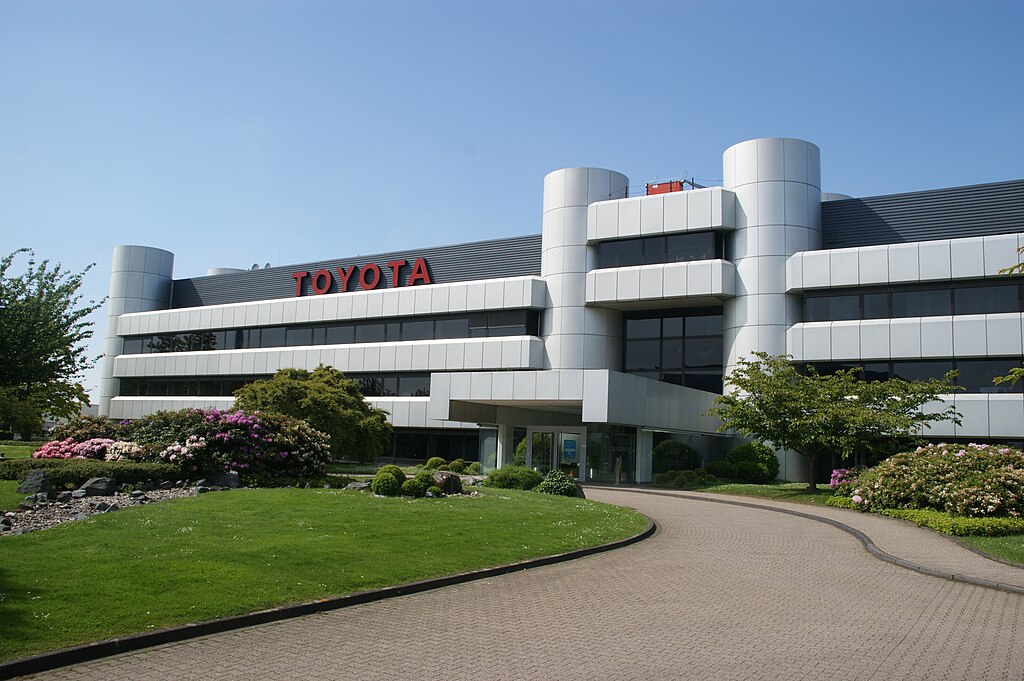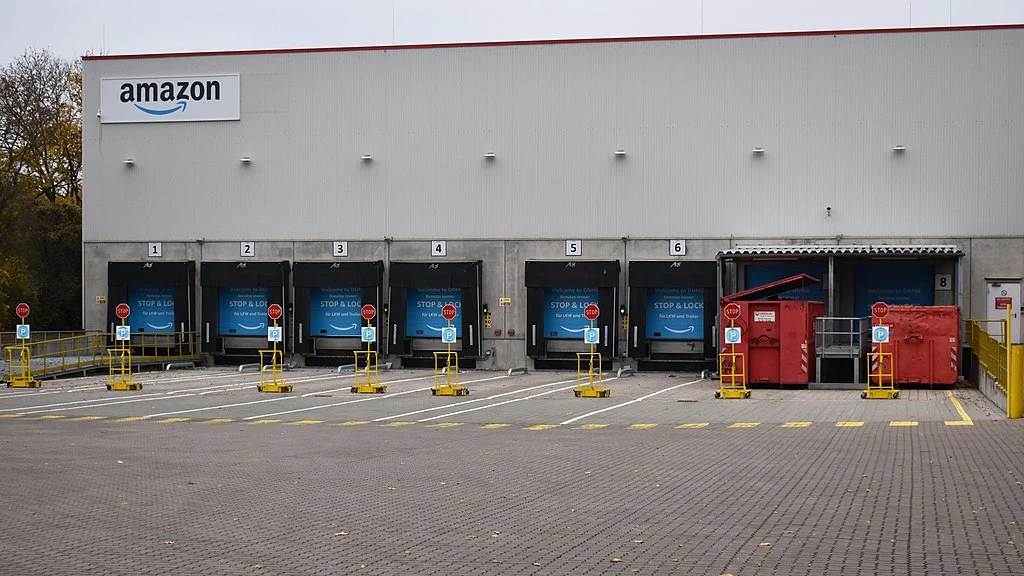What if cutting your lead time by just a few days could save you 30% in operational costs1 and completely transform your business?
In 2024, customers expect rapid turnaround, and companies that fail to reduce lead times risk losing not just time—but profits and customer loyalty. Whether you’re running a manufacturing plant or managing an e-commerce operation, the impact of lead time is undeniable.
This blog explores practical strategies for reducing lead time, boosting efficiency, and keeping your business competitive.
Let’s go!
What Is Lead Time?
Lead time refers to the total duration from the start of a process until its completion, and it is critical across various industries.
- In project management, it measures the time from project initiation to delivery, which directly impacts project timelines and client satisfaction.
- In manufacturing, it refers to the time taken from order placement to the delivery of the finished product, often including procurement, production, and shipping stages.
- In logistics, lead time spans the supply chain, covering the period from raw material procurement to final product delivery.
Efficient lead time management is essential for improving productivity and customer satisfaction. Companies that reduce it can respond more swiftly to market demands, reducing inventory costs and gaining a competitive edge.
Lead Time vs. Cycle Time vs. Delivery Time
| Aspect | Lead Time | Cycle Time | Delivery Time |
| Definition | Total time from the initiation of a process to its completion. | The time it takes to complete a specific task or production unit. | The time taken to deliver a product or service to the customer after completion. |
| Scope | Includes all stages from order/request to delivery. | Focuses on individual tasks or processes within the overall workflow. | Focused solely on the distribution or shipping process. |
| Key Focus | Total duration of the process, including delays and waiting times. | Efficiency of the actual working process. | How long it takes to move the final product to the customer. |
| Measurement Start | When an order or request is placed. | When work begins on the task. | When the product is ready for shipping. |
| Measurement End | When the final product/service is delivered. | When the task is completed. | When the customer receives the product. |
| Use Case | Project management, manufacturing, supply chain, logistics. | Manufacturing, agile development, lean management. | Logistics, distribution, shipping. |
| Example | The time between placing an order for raw materials and receiving the final product. | The time taken to assemble one product unit once all materials are ready. | The time it takes to ship a finished product from the warehouse to the customer’s location. |
Types of Lead Time
Customer Lead Time
Customer lead time is the period between order placement and fulfillment. This timeframe is critical for determining customer satisfaction, as it directly impacts their experience.
In eCommerce and retail2, customers expect fast fulfillment; delays can lead to frustration and potential loss of business. Shorter customer lead times enhance satisfaction and boost repeat purchases and positive reviews.
Studies have shown that businesses with optimized customer lead times are more likely to retain loyal customers and improve supply chain efficiency. This time can be reduced through efficient order management, automation, and better supplier coordination.
Manufacturing Lead Time
Manufacturing lead time refers to the total time required to produce a product, from the initiation of production to the completion of the final product.
This metric is crucial for optimizing production efficiency and meeting customer expectations. It encompasses several stages, including order processing, procurement of raw materials, actual production, quality control, and final packaging.
For example, a smartphone company3 may spend 2 days procuring materials, 5 days in production, and additional time on quality checks and packaging, resulting in a total lead time of 10 days.
Efficient management of manufacturing lead time is essential. Longer lead times can lead to delays, customer dissatisfaction, and increased costs due to holding excess inventory.
Conversely, reducing lead time through strategies such as improving supplier relationships, optimizing production processes, and implementing automation can enhance operational efficiency, reduce costs, and provide a competitive advantage.
Monitoring and optimizing this factor allows for better resource allocation and improved delivery times, directly impacting both operational performance and customer satisfaction.
Material Lead Time
Material lead time refers to the time required to procure raw materials or components from suppliers, which includes order processing, transportation, and receiving.
This is crucial for manufacturing efficiency because delays in material procurement can halt production, leading to extended overall lead times and potential customer dissatisfaction.
Effectively managing material lead time can be challenging, as supplier reliability, market dynamics, and transportation issues often influence it.
To optimize material lead time, manufacturers can implement strategies such as diversifying suppliers, maintaining a safety stock, and using inventory management systems.
Diversifying the supplier base can reduce reliance on a single vendor and mitigate risks from disruptions, while just-in-time (JIT) inventory systems can help balance supply and demand without overstocking.
This way, businesses can avoid production delays, minimize inventory holding costs, and ensure smoother operations.
Supply Chain Lead Time
Supply chain lead time refers to the total time required for a product to move through the entire supply chain, from procurement of raw materials to final delivery to the customer. This timeline encompasses several key stages, including material sourcing, production, and transportation, making it a vital metric for managing overall efficiency and customer satisfaction.
Longer lead times can disrupt production schedules, lead to stockouts, or increase holding costs due to excessive inventory. For instance, global disruptions such as shipping delays have pushed supply chain lead times for production materials from an average of 30 days to nearly 40 days4 in certain industries.
To reduce this time, companies can improve supplier collaboration, optimize inventory management, and embrace technology like supply chain management software and automation tools. Streamlining processes and ensuring real-time visibility across the supply chain help businesses react more swiftly to changes, reduce delays, and ultimately enhance customer satisfaction.
Why Lead Time Is Important in Business

Impact on Customer Satisfaction, Cost, and Inventory Management
Shorter lead times often lead to higher customer satisfaction as products are delivered faster, improving the overall customer experience and boosting loyalty.
Conversely, long lead times can result in customer dissatisfaction, missed sales, and potential loss of market share, as competitors with quicker delivery options may gain an advantage. Furthermore, extended lead times can increase inventory holding costs5 since businesses must maintain higher safety stock to avoid stockouts.
In terms of inventory management, reducing lead time allows businesses to operate more efficiently with lower inventory levels. This minimizes storage costs and frees up capital, enabling companies to reinvest in growth opportunities. Well-managed lead times also mitigate the risks of overstocking or understocking6, ensuring the right products are available at the right time.
Connection to Business KPIs (Productivity, Performance)
Lead time is directly tied to key business performance indicators (KPIs), particularly productivity and operational efficiency. By reducing it, companies can speed up their production cycles, enhancing productivity while maintaining quality. Improved lead time management also impacts KPIs related to on-time delivery and order fulfillment rates, crucial for maintaining a competitive edge in today’s fast-paced market.
Shorter lead times enhance overall performance by ensuring better resource allocation, improving demand forecasting, and increasing responsiveness to market changes.
Efficient lead time management is not just a tactical improvement—it’s a strategic necessity for long-term business success.
How to Calculate Lead Time Formula Accurately
Simply put, Lead Time = Order Delivery Date – Order Request Date.
This calculates the difference between an order’s placement and delivery. This formula helps businesses understand the time it takes from customer requests to final fulfillment, which is critical for maintaining efficiency.
For instance, if an e-commerce customer places an order on January 1st and receives it on January 10th, the lead time is 9 days.
Industry-Specific Examples
In e-commerce, companies like Amazon thrive on reducing lead times to as little as two days. This reduction enhances customer satisfaction by meeting demand faster and improving retention. In manufacturing, lead time spans raw material procurement, production, and delivery.
For example, in the automotive industry, lead times can stretch from weeks to months, depending on supply chain complexity. Companies that optimize lead times through process automation and better supplier coordination have been known to reduce costs by up to 25%7 while also boosting customer satisfaction.
Data-Driven Decision-Making Through Lead Time Analysis
Lead time analysis enables project managers to make strategic decisions by identifying bottlenecks and improving efficiency.
For example, reducing lead times by just 10% can increase customer satisfaction8 by 15% and inventory holding costs by 20%, especially in sectors with tight supply chains like retail and manufacturing.
Leveraging real-time data and tools like inventory management software allows companies to predict demand more accurately, ensuring smoother operations and timely deliveries.
Tip: Consider using ERP systems like SAP for automatic lead time tracking and analysis.
The Impact of Long Lead Times
- Missed deadlines: Disrupts project timelines and harms the company’s reputation.
- Increased customer churn: Customers are more likely to switch to competitors offering faster services.
- Operational inefficiencies: Longer lead times often lead to production bottlenecks, excessive manual processes, and higher labor costs.
- Higher operational costs: Holding more inventory to buffer against delays increases storage costs.
- Lost business opportunities: The inability to fulfill orders quickly results in missed chances to capture market demand.
- Reduced competitiveness: Companies with longer lead times struggle to compete in fast-paced markets where quick fulfillment is a key differentiator.
- Impacted revenue generation: Longer lead times result in fewer repeat purchases and potential revenue loss.
How Long Lead Times Create Bottlenecks In Supply Chain & Production

Delays in acquiring raw materials
When suppliers take longer than expected to deliver key raw materials, production lines often halt. This can lead to costly downtime, underutilized resources, and the need for expedited shipping to make up for delays, further escalating costs. For instance, bottlenecks in the procurement stage can disrupt the entire production process9, causing cascading delays throughout the supply chain.
Increased inventory holding costs
To mitigate the risk of production delays, companies often resort to holding larger inventories, tying up valuable working capital and increasing storage costs. However, excessive inventory can lead to inefficiencies, such as higher warehousing costs and the risk of materials becoming obsolete or damaged over time10. This situation reflects a poor balance between demand forecasting and lead time management.
Underutilized production capacity
Long lead times in one part of the supply chain can lead to inefficient use of equipment, labor, and other production resources. For example, a production line waiting for delayed components results in idle machinery and workers, directly impacting operational efficiency and output11. When materials eventually arrive, companies are often forced to schedule overtime or hire additional temporary workers, which adds to operational costs.
Domino effect on supply chain stages
A delay at one stage, such as transportation or material procurement, creates a domino effect that can slow down every subsequent stage in the production and supply chain. This leads to missed production schedules, prolonged order fulfillment, and eventually missed delivery dates for customers.
Customer Dissatisfaction and Missed Deadlines
Long lead times cause businesses to miss customer delivery expectations, leading to dissatisfaction and, potentially, customer churn. In industries like e-commerce and retail, where customers demand faster shipping and turnaround times, companies with prolonged lead times lose competitive advantage and risk damaging their brand reputation.
Operational Inefficiencies and Increased Complexity
Long lead times introduce more complexity to an organization’s operations. This results in additional planning, coordination, and control efforts to minimize the disruptions caused by bottlenecks12. This complexity often reduces overall supply chain agility and the ability to respond to fluctuations in demand.
Read More: Complete Guide Pre-Award Project Management
Actionable Tips to Reduce Lead Time

Streamline Communication for Team Coordination
Effective communication is critical in reducing lead times, particularly when coordination between departments like procurement, production, and logistics is required.
Tools such as Slack, Microsoft Teams, and project management platforms like Mirorim enable real-time collaboration, facilitating quicker decision-making and issue resolution. These platforms allow instant updates on order status, supply issues, and production timelines, ensuring everyone is on the same page.
According to a study, companies using advanced communication tools saw a 15% increase in operational efficiency13, directly impacting lead times by reducing miscommunication between teams.
Automate Processes to Reduce Manual Workflows
Automation is a game-changer in reducing lead time by eliminating the delays caused by manual processes. By implementing ERP systems like SAP or Oracle, businesses can automate tasks such as order entry, inventory management, and even supplier interaction. This not only reduces errors but also cuts down on processing times.
For example, automating the order processing workflow can reduce order fulfillment time by up to 50%, leading to faster production and delivery cycles14.
Furthermore, robotic process automation (RPA) can handle repetitive tasks like data entry, allowing human resources to focus on more critical issues that require strategic thinking.
Build Supplier Relationships: Faster Deliveries
Strong relationships with suppliers are essential for minimizing lead times. Regular and transparent communication ensures suppliers can plan and deliver materials more efficiently, reducing unexpected delays.
Advanced tools like supplier relationship management (SRM) systems enable businesses to monitor supplier performance, share real-time demand forecasts, and negotiate better terms, ultimately improving delivery timelines.
Establishing contracts with clear lead time expectations and penalties for delays can incentivize suppliers to meet deadlines consistently. Companies with strong supplier relationships often experience 25% faster deliveries15 than those with poor communication and coordination.
Improve Forecasting: Demand Optimization
Accurate demand forecasting plays a pivotal role in reducing lead times by ensuring that production aligns closely with customer demand. To produce highly accurate demand forecasts, machine learning and predictive analytics can analyze historical sales data and external market factors.
By sharing these insights with suppliers and logistics partners, businesses can anticipate demand spikes or drops, avoiding overstocking or stockouts. Companies that adopt advanced forecasting tools report a 20% reduction in lead time16 due to better alignment of inventory levels with customer demand.
Collaborating with suppliers to include them in demand forecasting helps prevent raw material shortages and accelerates delivery timelines.
Inventory Management: Just-in-Time Strategies
Just-in-time (JIT) inventory management helps reduce lead times by minimizing excess stock and ensuring that materials are available precisely when needed. By synchronizing production schedules with real-time demand, JIT minimizes the need for large inventories, cutting down on holding costs and improving cash flow.
The integration of JIT with automated inventory management systems enables companies to respond quickly to changes in demand. For example, businesses implementing JIT practices report a 30% decrease in lead times17 while maintaining production efficiency and customer satisfaction.
Real-World Examples and Case Studies
Toyota: Manufacturing with Just-In-Time (JIT)

Toyota18, one of the largest automotive manufacturers in the world, faced challenges in the 1970s related to overproduction and excessive inventory. In response, the company pioneered the Just-In-Time (JIT) production system, aimed at reducing waste and synchronizing production with real-time demand.
Challenges: Before JIT, Toyota’s supply chain was burdened with excess inventory, leading to inefficiencies in both production and capital use. The company needed to find a way to reduce these inefficiencies while maintaining its reputation for quality.
Result: After implementing JIT, Toyota drastically cut production lead times. This system allowed them to reduce inventory by as much as 75%, cutting storage and overhead costs.
Additionally, it improved agility, enabling the company to respond faster to market changes and customer demands. The ripple effect was seen in the global adoption of lean manufacturing principles.
Dell: Build-to-Order Model for Faster, Customized Delivery

In the 1990s, Dell was one of the first companies to adopt a build-to-order19 approach in the highly competitive computer manufacturing industry. Traditional manufacturing relied on large inventories of pre-built products, leading to high inventory costs and obsolescence risks.
Challenges: Dell needed a more efficient system to minimize inventory costs, improve product customization, and reduce lead times from order to delivery. Its existing supply chain was too rigid, with delays caused by overstocking or product misalignment with customer demand.
Result: By shifting to the build-to-order model, Dell reduced its lead time from weeks to just 4-5 days. This strategy cut inventory costs by nearly 50% and allowed for greater product customization, which became a key selling point for the brand. The reduced lead time also contributed to improved cash flow and higher customer satisfaction.
Amazon: Optimizing Logistics for Ultra-Fast Shipping

As e-commerce exploded in the early 2000s, Amazon20 faced increasing pressure to shorten delivery times to meet customer expectations. Long lead times in the shipping process meant delayed deliveries, reducing customer satisfaction and increasing churn.
Challenges: Amazon’s primary challenge was managing an extensive, geographically dispersed inventory. The company needed to optimize its logistics and fulfillment systems to speed up the order-to-delivery process while maintaining cost efficiency.
Result: Through investments in strategically located fulfillment centers and advanced logistics technology, Amazon reduced its shipping lead times dramatically. By 2015, the company offered two-day shipping to Prime members and introduced same-day delivery in select regions.
These innovations reduced delivery lead times by over 50%, reshaped customer expectations in e-commerce, and gave Amazon a competitive edge over rivals like Walmart.
.
Conclusion
This blog has covered actionable strategies to cut lead times, including automation, real-time data integration, and strengthening supplier relationships. Implementing these methods will help businesses reduce delays, boost efficiency, and increase customer satisfaction. Reducing lead time isn’t just about speed—it’s about staying competitive and improving profitability.
Mirorim offers the tools you need to streamline processes and reduce lead times by up to 30%. With features like task automation and real-time team coordination, Mirorim helps you cut errors and optimize workflows.
Start reducing lead times today—Create a Free Mirorim Account and drive immediate improvements in your operations!
FAQ | What Is Lead Time?
No, lead time and delivery time are not the same. Lead time includes the entire process from placing an order to receiving it, including manufacturing or production. Delivery time refers specifically to the time it takes for the product to be shipped to the customer after it is ready.
An example of lead time is when a company orders raw materials from a supplier. If the supplier takes 5 days to process the order and ship it, and another 3 days for it to arrive, the total lead time is 8 days.
Lead time on your order refers to the time from when you place your order to when it is delivered to you. It includes all steps such as processing, manufacturing (if applicable), and shipping.
A 2-week lead time means it will take 14 days from the time an order is placed until it is completed and delivered to the customer.
Manufacturing Lead Time: The time taken to produce a product from start to finish.
Material Lead Time: The time it takes to procure raw materials needed for production.
A 3-day lead time means that it will take 3 days from the moment an order is placed until the product or service is delivered.
Lead time hours refer to shorter timeframes within a day, usually in industries where production or shipping is measured in hours rather than days. It represents the number of hours needed to complete a task from start to finish.
The minimum lead time refers to the shortest possible time to complete a process from the moment an order is placed to when it is delivered. This varies depending on the industry and logistical capabilities.
The lead time law, also known as Little’s Law, states that the average number of items in a system (Inventory) equals the product of the average arrival rate of items and the average time an item spends in the system (Lead Time).
Formula: Inventory = Throughput Rate × Lead Time
It is called lead time because it represents the lead or total time between the initiation of a process and its completion, often indicating how long it takes to “lead” a project or order from start to finish.
In the workplace, lead time refers to the time taken to complete a task or project from initiation to completion. This could apply to project management, manufacturing, or any business process where timing is crucial.
HR lead time refers to the time it takes from the moment an HR-related request is initiated (such as recruiting or employee onboarding) to when the request is fully processed or completed.
References
- A03c02d7_Admin. (2023, February 6). Case Study – Cost Savings and Lead Time Reduction – FCA Packaging. FCA Packaging. https://fcapackaging.com/resource-center/case-study-cost-savings-and-lead-time-reduction/ ↩︎
- The Critical Role of Delivery Lead Time in E-Commerce | Importance, Impact, and Consumer Behavior. (n.d.). https://www.starlinks-me.com/blog-post/how-delivery-lead-timeimpacts-online-shopping-decisions ↩︎
- Manufacturing Lead Time: Importance, How to reduce Production Lead time etc. (n.d.). ACTouch ERP Software. https://www.actouch.com/knowledgebase/manufacturing-lead-time/ ↩︎
- Williamson, C. (2024, August 2). Shipping delays impact global supply chains and exports. IHS Markit. https://www.spglobal.com/marketintelligence/en/mi/research-analysis/shipping-delays-impact-global-supply-chains-and-exports-Jul24.html ↩︎
- Azzi, A., Battini, D., Faccio, M., Persona, A., & Sgarbossa, F. (2014). Inventory holding costs measurement: a multi-case study. The International Journal of Logistics Management, 25(1), 109–132. https://doi.org/10.1108/ijlm-01-2012-0004 ↩︎
- Dautner, M. (2023, August 8). Inventory Planning: A Comprehensive Guide to Optimizing Stock Levels and Improving Supply Chain Efficiency. https://www.inecta.com/blog/inventory-planning-a-comprehensive-guide-to-optimizing-stock-levels-and-improving-supply-chain-efficiency ↩︎
- Küpper, D., Sieben, C., Boyne, J., & Li, A. (2022). The Automation Revolution in Manufacturing. In Boston Consulting Group. Retrieved September 8, 2024, from https://web-assets.bcg.com/dd/72/f463a37441d3aeb7a9dd5f8e024a/bcg-the-automation-revolution-in-manufacturing-mar-2022.pdf ↩︎
- Flow. (2024, June 26). Reducing Global Lead Times to Improve Customer Experience at Becton Dickinson. SupplyChainBrain. https://www.supplychainbrain.com/articles/39939-reducing-global-lead-times-to-improve-customer-experience-at-becton-dickinson ↩︎
- Van Anh Nguyen, V. T. J. S. C. (2024, March 21). Supply Chain Bottlenecks: Strategies for Improved Efficiency and Customer Satisfaction. Viindoo. https://viindoo.com/blog/business-management-3/supply-chain-bottlenecks-1453 ↩︎
- Ike, C. (2024, July 18). Excess Inventory: Root Causes and How to Deal With It. Uphance. https://www.uphance.com/blog/what-is-excess-inventory/ ↩︎
- Shetty, P. (2024, July 9). Idle Time In Manufacturing | Fogwing.io. Fogwing Industrial Cloud. https://www.fogwing.io/blog/idle-time-manufacturing/ ↩︎
- Chang, W. S., & Lin, Y. T. (2019). The effect of lead-time on supply chain resilience performance. Asia Pacific Management Review, 24(4), 298–309. https://doi.org/10.1016/j.apmrv.2018.10.004 ↩︎
- The Total Economic Impact Of Microsoft Teams. (2019). In A Forrester Total Economic ImpactTM Study Commissioned by Microsoft. https://www.microsoft.com/en-us/microsoft-365/blog/wp-content/uploads/sites/2/2019/04/Total-Economic-Impact-Microsoft-Teams.pdf ↩︎
- Bangia, M., Cruz, G., Huber, I., Landauer, P., & Sunku, V. (2020, May 13). Sales automation: The key to boosting revenue and reducing costs. McKinsey & Company. https://www.mckinsey.com/capabilities/growth-marketing-and-sales/our-insights/sales-automation-the-key-to-boosting-revenue-and-reducing-costs ↩︎
- Staff. (n.d.). Case Studies: Developing Collaborative Supplier Partnerships. Supply Chain Resource Cooperative. https://scm.ncsu.edu/scm-articles/article/case-studies-developing-collaborative-supplier-partnerships ↩︎
- Ciullo, B. (2024, May 9). Success Story | Ridgerock Tools Case Study | ForecastRx Resources. ForecastRx. https://www.forecastrx.com/inventory-forecasting-resources-2/ridgerock-tools-case-study/ ↩︎
- Cleverence. (n.d.). Just-in-time systems in the spotlight: case studies of three successful companies. https://www.cleverence.com/articles/business-blogs/just-in-time-systems-in-the-spotlight-case-studies-of-three-successful-companies/ ↩︎
- Cleverence. (n.d.). Just-in-time systems in the spotlight: case studies of three successful companies. https://www.cleverence.com/articles/business-blogs/just-in-time-systems-in-the-spotlight-case-studies-of-three-successful-companies/ ↩︎
- Team, O. (2023, October 10). Just-in-Time Inventory Management: Definition, Implementation, and Benefits. Oboloo. https://oboloo.com/blog/just-in-time-inventory-management-definition-implementation-and-benefits/ ↩︎
- O’Neill, S. (2024, February 5). How Amazon reworked its fulfillment network to meet customer demand – Amazon Science. Amazon Science. https://www.amazon.science/news-and-features/how-amazon-reworked-its-fulfillment-network-to-meet-customer-demand ↩︎



